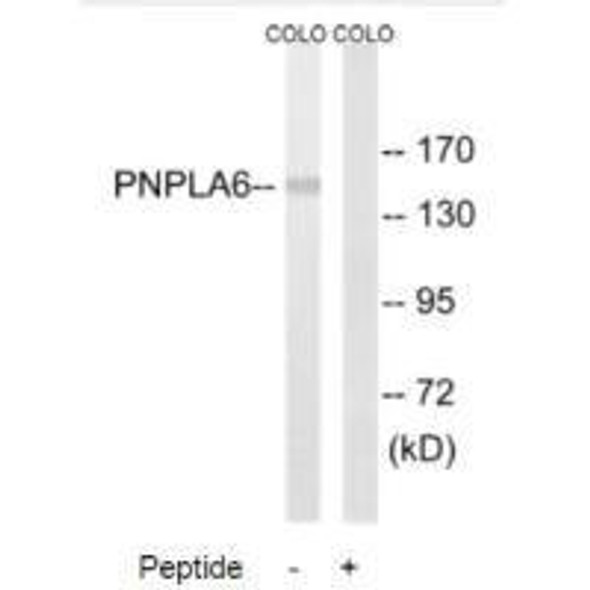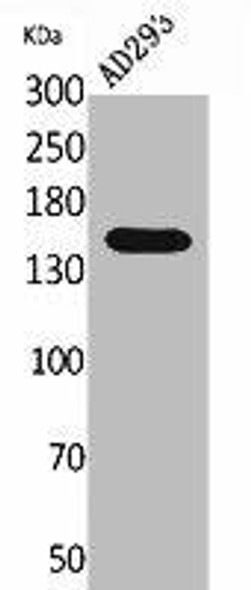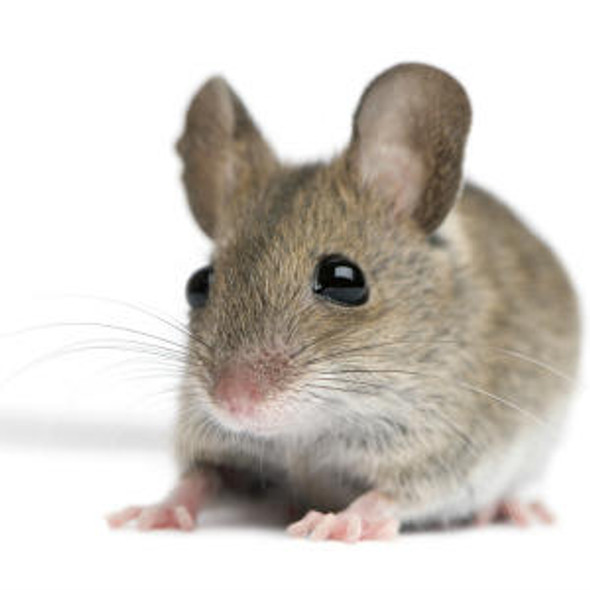PNPLA6 Antibody (PACO56010)
- SKU:
- PACO56010
- Product Type:
- Antibody
- Reactivity:
- Human
- Host Species:
- Rabbit
- Isotype:
- IgG
- Applications:
- ELISA
- IHC
- IF
- Antibody Type:
- Polyclonal Antibody
- Conjugation:
- Unconjugated
Description
PNPLA6 Antibody (PACO56010)
The PNPLA6 Polyclonal Antibody (PAC056010) is a valuable tool for researchers studying PNPLA6, a key enzyme involved in lipid metabolism and neurological function. This antibody, produced in rabbits, exhibits high specificity and sensitivity for detecting PNPLA6 in human samples, making it ideal for Western blot applications. By targeting the PNPLA6 protein, this antibody enables researchers to analyze its expression in various cell types, aiding in investigations related to lipid metabolism, neurodegenerative disorders, and other conditions linked to PNPLA6 activity.
PNPLA6, also known as neuropathy target esterase, plays a crucial role in regulating lipid droplet metabolism and maintaining neuronal function. Dysregulation of PNPLA6 activity has been implicated in various neurological disorders, making it a promising target for drug development and disease research. Understanding the function of PNPLA6 is essential for uncovering its role in lipid homeostasis and neurological health, providing insights into potential therapeutic strategies for treating related conditions.
| Antibody Name: | PNPLA6 Antibody (PACO56010) |
| Antibody SKU: | PACO56010 |
| Size: | 50ug |
| Host Species: | Rabbit |
| Tested Applications: | ELISA, IHC, IF |
| Recommended Dilutions: | ELISA:1:2000-1:10000, IHC:1:500-1:1000, IF:1:50-1:200 |
| Species Reactivity: | Human |
| Immunogen: | Recombinant Human Neuropathy target esterase protein (345-493AA) |
| Form: | Liquid |
| Storage Buffer: | Preservative: 0.03% Proclin 300 Constituents: 50% Glycerol, 0.01M PBS, pH 7.4 |
| Purification Method: | >95%, Protein G purified |
| Clonality: | Polyclonal |
| Isotype: | IgG |
| Conjugate: | Non-conjugated |
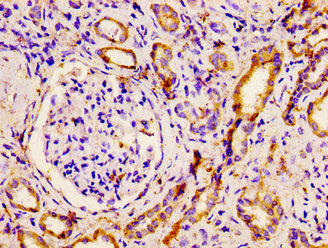 | IHC image of PACO56010 diluted at 1:500 and staining in paraffin-embedded human kidney tissue performed on a Leica BondTM system. After dewaxing and hydration, antigen retrieval was mediated by high pressure in a citrate buffer (pH 6.0). Section was blocked with 10% normal goat serum 30min at RT. Then primary antibody (1% BSA) was incubated at 4°C overnight. The primary is detected by a biotinylated secondary antibody and visualized using an HRP conjugated SP system. |
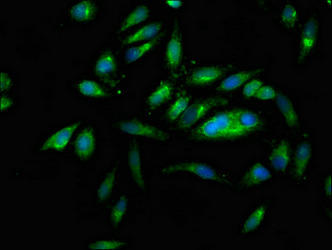 | Immunofluorescence staining of Hela cells with PACO56010 at 1:166, counter-stained with DAPI. The cells were fixed in 4% formaldehyde, permeabilized using 0.2% Triton X-100 and blocked in 10% normal Goat Serum. The cells were then incubated with the antibody overnight at 4°C. The secondary antibody was Alexa Fluor 488-congugated AffiniPure Goat Anti-Rabbit IgG(H+L). |
| Background: | Phospholipase B that deacylates intracellular phosphatidylcholine (PtdCho), generating glycerophosphocholine (GroPtdCho). This deacylation occurs at both sn-2 and sn-1 positions of PtdCho. Its specific chemical modification by certain organophosphorus (OP) compounds leads to distal axonopathy. |
| Synonyms: | Neuropathy target esterase (EC 3.1.1.5) (Patatin-like phospholipase domain-containing protein 6), PNPLA6, NTE |
| UniProt Protein Function: | NTE: Phospholipase B that deacylates intracellular phosphatidylcholine (PtdCho), generating glycerophosphocholine (GroPtdCho). This deacylation occurs at both sn-2 and sn-1 positions of PtdCho. Its specific chemical modification by certain organophosphorus (OP) compounds leads to distal axonopathy. Defects in PNPLA6 are the cause of spastic paraplegia autosomal recessive type 39 (SPG39); also known as NTE-related motor neuron disorder (NTEMND). Spastic paraplegia is a neurodegenerative disorder characterized by a slow, gradual, progressive weakness and spasticity of the lower limbs. Rate of progression and the severity of symptoms are quite variable. Initial symptoms may include difficulty with balance, weakness and stiffness in the legs, muscle spasms, and dragging the toes when walking. In some forms of the disorder, bladder symptoms (such as incontinence) may appear, or the weakness and stiffness may spread to other parts of the body. SPG39 is associated with a motor axonopathy affecting upper and lower limbs and resulting in progressive wasting of distal upper and lower extremity muscles. Belongs to the NTE family. 3 isoforms of the human protein are produced by alternative splicing. |
| UniProt Protein Details: | Protein type:Membrane protein, integral; Hydrolase; EC 3.1.1.5 Chromosomal Location of Human Ortholog: 19p13.2 Cellular Component: endoplasmic reticulum; endoplasmic reticulum membrane; membrane Molecular Function:lysophospholipase activity Biological Process: developmental process; glycerophospholipid catabolic process Disease: Boucher-neuhauser Syndrome; Laurence-moon Syndrome; Oliver-mcfarlane Syndrome; Spastic Paraplegia 39, Autosomal Recessive |
| NCBI Summary: | This gene encodes a phospholipase that deacetylates intracellular phosphatidylcholine to produce glycerophosphocholine. It is thought to function in neurite outgrowth and process elongation during neuronal differentiation. The protein is anchored to the cytoplasmic face of the endoplasmic reticulum in both neurons and non-neuronal cells. Mutations in this gene result in autosomal recessive spastic paraplegia, and the protein is the target for neurodegeneration induced by organophosphorus compounds and chemical warfare agents. Multiple transcript variants encoding different isoforms have been found for this gene. [provided by RefSeq, Oct 2009] |
| UniProt Code: | Q8IY17 |
| NCBI GenInfo Identifier: | 150403921 |
| NCBI Gene ID: | 10908 |
| NCBI Accession: | Q8IY17.2 |
| UniProt Secondary Accession: | Q8IY17,O60859, Q86W58, Q9UG58, A6NGQ0, B4DFB9, B7Z7T2 F5H5K9, J3KQS3, |
| UniProt Related Accession: | Q8IY17 |
| Molecular Weight: | 143,351 Da |
| NCBI Full Name: | Neuropathy target esterase |
| NCBI Synonym Full Names: | patatin like phospholipase domain containing 6 |
| NCBI Official Symbol: | PNPLA6 |
| NCBI Official Synonym Symbols: | NTE; sws; BNHS; LNMS; OMCS; SPG39; NTEMND; iPLA2delta |
| NCBI Protein Information: | neuropathy target esterase |
| UniProt Protein Name: | Neuropathy target esterase |
| UniProt Synonym Protein Names: | Patatin-like phospholipase domain-containing protein 6 |
| Protein Family: | Neuropathy target esterase |
| UniProt Gene Name: | PNPLA6 |
| UniProt Entry Name: | PLPL6_HUMAN |
| Secondary Antibody |
| Anti-HRP Goat Anti-Rabbit IgG (H+L) Antibody (CABS014) |
| Recommended Products |
| Anti-FITC Goat Anti-Rabbit IgG (H+L) Antibody (CABS011) |
| Anti-HRP-conjugated Beta Actin Antibody (CABC028) |






